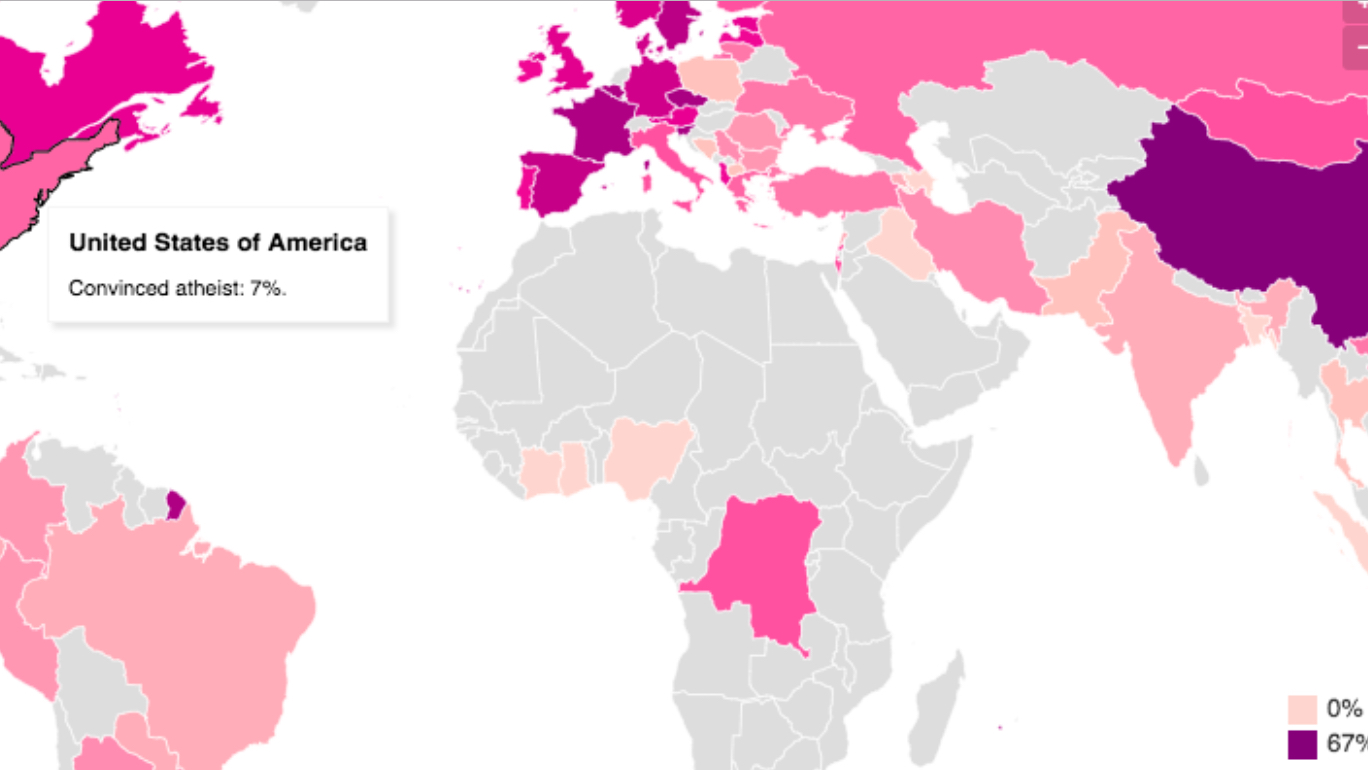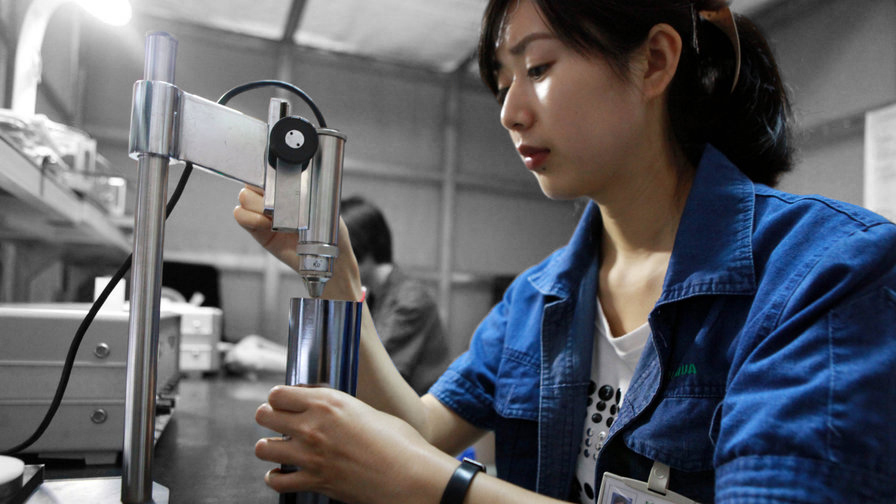How China gained — and lost — its spot as the world’s wealthiest nation

- In the 13th century, China was the world’s most urbanized, technologically advanced, and productive (in terms of iron) country.
- In the 19th century, China's failure to invest in industrialization made it difficult for the nation to keep up with more developed nations.
- Switching to a hybrid economy in the 20th century has helped China become the rising superpower it is today.
If you find yourself playing trivia and the question is, “Which country has the biggest…?”, or, “Where do you find the most…?”, it’s a safe guess the answer will be China. The nation is huge. For context, the margin of error in the 2010 Chinese census — 25 million people — was roughly equivalent to the populations of Israel, Austria, and Greece combined.
China has always been a behemoth. For much of its history, it led the world in terms of wealth, technology, philosophy, and science. A thousand years ago, under the Northern Song Dynasty, China was the richest country in the world.
But, within a few centuries, China lost its place at the top. Decade after decade saw a gradual drop down the rich list. By 1978, its GDP was 2.5% that of the U.S. and 10% that of Brazil. Of course, the story does not end in the 1970s, and the tale of China is one of a very old giant learning how to stand again. Today, China is the second largest economy, with the highest number of millionaires, and, if you believe many economists, it’s set to soon become the leader.
How can we make sense of this economic seesaw? What historical factors had China slip from the top, and what modern factors have let it climb back up?
When China led the world
As far back as records allow, we can see a definite sense of Chinese identity. In much of the nation’s political and historical narratives — for example, with Confucius in the 6th century BCE — you see a differentiation between the civilized Chinese (Huá) and barbarous, brutish foreigners (Yi). The Chinese saw themselves as the center of the world — the vanguard of culture, government, and philosophy.
China was also at the forefront in terms of population. The nation has two huge rivers that allow for “double cropping” (which means collecting two harvests) of soybeans and rice. This, in turn, allowed for a huge and rapid population growth: It’s why China has the biggest population today. (India, likewise, is fluvially blessed and similarly populous.) Being so vast has meant that China has always been a hard country to govern, and it’s why Chinese history has centuries of “warring periods” and frequent dynastic shifts. Over time, this led to a strong, centralized government (and one of the oldest formal, complex civil services in the world).
But China did not get rich only on the back of fertile rice paddies. It did so largely thanks to the Silk Road: a pancontinental trading route from the gates of Beijing to the walls of Constantinople. It was the combination of a big population, strong central leadership, scientific investment, and the Silk Road that helped China become a global economic and technological leader. Under the 13th-century Song Dynasty, China was the most urbanized, technologically advanced, and productive (in terms of iron, at least) country in the world.
In Beijing, at this time, people were using mechanical clocks and had access to gunpowder. Shipwrights were building huge vessels, capable of deepwater expeditions. Meanwhile, Chinese inventors gave their sailors the compass necessary to do so. The Song Dynasty economy was so complex they even felt the need to invent paper money and rudimentary banking systems. The rest of the world was indebted to Song technology. The world looked to China.
How China fell behind
In the 15th century, Admiral Zheng He led seven major “treasure voyages” into the Indian Ocean, connecting China with countries in South Asia, the Middle East, and Africa. They were earlier and farther reaching than those of almost all the European powers. But, as the standard narrative goes, things changed.
As the Ming Dynasty (1368 to 1644) turned to the Qing Dynasty (1644 to 1911), these “treasure ships” were called home. China locked down. At a time when the rest of the world connected and traded openly (and empires were formed), China became insular and protectionist.
But this narrative is simplistic to the point of misrepresentation. China’s economy did not suddenly fall off the map, and domestic investment didn’t make them some forgotten backwater. Up until the Industrial Revolution, China was still on par with Europe. In fact, up until the mid-1800s China still accounted for 25-35% of all global trade. China did not fall behind because of an insular administration, but because it didn’t invest in industrialization.
China was hugely dependent on agriculture, which includes the spices they would sell to the world. In fact, the European empires getting rich off their colonial conquests actually ended up just increasing Chinese exports, making China just as rich as their European counterparts, like Spain.
But having an economy that focused too heavily on agriculture and soft goods (like silks) meant munitions and industry therefore languished. As a result, when the industrialized and militarized empires came knocking in the late 19th century — as the British did with the Opium Wars — China was at a disadvantage.
Mao’s Revolution
China underwent a radical shift in the mid-20th century. In the same period, Japan’s Meiji Restoration yanked their country into modernity — copying, beat for beat, the Western industrial, capitalist model. China needed its own revolution. But that revolution would prove to be much different.
When Mao Zedong’s communist revolution took over China, they focused first on the agricultural sector. Mao elevated the peasant to being a quasi-heroic figure of Chinese identity, and his Land Reform Movement confiscated arable land from landlords (who were, often, killed) and redistributed it to the peasantry. In the 1950s and ‘60s, Mao was ideologically focused on the rural classes, and not on industrialization.
But it’s not so simple as to say that Mao got things wrong. Mao and Maoism did believe industrialization was important, but it was just that he thought it could be done through the peasantry and through agricultural reform.
“[Mao] wasn’t against industrialization,” says Shaun Breslin, Professor of Politics and International Studies at Warwick University.
“He just thought that if you mobilized the population through ideology and belief, then they could bring about changes without the financial investments that accompanied industrialization everywhere else. I mean, his primary focus was on the countryside, but he called it walking on two legs; It wasn’t either/or, but you could do both at the same time. You could have incredible rural change and industrialization at the same time.”
Don’t call it “capitalism”
Mao’s ideas didn’t work. In 1978, after nearly three decades in power, there were still 250 million people living below the poverty line, and the Chinese economy was still dominated by agriculture, not industry. China was exporting only tiny amounts of hard goods. Around 50 million people had been killed as a result of the famine, directly caused by Mao’s “Great Leap Forward.”
When Mao died, so too did his ideological purity (as well as his hardline attitude to alternative policies). When Deng Xiaoping came to power, he was largely Maoist in name only. Deng introduced market-focused policies, and, as a 2013 Cato Institute report put it, “we take the end of 1976 as the start of post-Mao reform and argue that China basically became a market economy by the end of the ‘90s.”
Deng’s administration brought in huge reforms. China reintroduced private farming, township and village enterprises, private businesses in cities, and Special Economic Zones — areas with ring-fenced tax and economic policies deliberately designed to attract foreign investment and stimulate growth. From the late 1970s, China allowed companies to keep some profits and devolved power to enterprises.
Breslin argues that Deng’s China not only adopted more capitalistic policies, but that there were “very different types of capitalism in different parts of the country as well.” So, Zhejiang province near Shanghai is “famous for being very heavily private sector dominated… but if you go to somewhere like Shanxi, you get a massive coal industry with a very, very different political economy.”
Breslin’s point is that Deng encouraged provinces to specialize in this or that area. Which, of course, all sounds like it could have been written by an American, free-market economic advisor. But as Breslin reminds us, even in China today, this must not be called “capitalist.”
“You can’t be capitalist [in China],” Breslin says. “It has to be something other than being capitalist. Saying ‘using market forces’ isn’t the same thing as being capitalist. Deng, in 1992 I think it was, said that both planning and markets are just economic means for raising productivity and raising growth.”
Whether we call it capitalist or simply “using market forces as a means,” Deng’s reforms were transformative. Between 1981 and 2010, about 679 million Chinese people were lifted above the extreme poverty line, and GDP growth averaged over 9% each year since he came into power. (To put that into perspective, the U.S. averaged 3% and India — similar demographically — averaged 5%.)
The story of the comeback kid
The story of modern China has been one of imitation and catch-up. Mao’s reforms paved the way but were too focused on agriculture and were too ideologically communist. Deng’s are what have placed China firmly back near the top of the leaderboards. It’s an economy that looks strikingly like most other developed states: a slightly more centralized, state-controlled economy, but very different from Maoism, and certainly not Marxist. The story since the 1970s has been predictable and familiar.
The problems modern China will face are, likewise, predictable. With an aging population and the inevitable slowdown of the “middle income” stage of economic history, China’s steep trajectory will start to plateau. A 2022 United Nations report projected China to “experience an absolute decline in its population as early as 2023.”
But as Breslin points out, the future might not be so predictable.
“A lot of economists will now tell you [that] there’s nothing that new in what China is doing. But in terms of philosophy, China is really now trying to ramp up the difference and their Chinese-ness. It’s based on some sort of mythical, eclectic cherry-picking of different parts of the Chinese past — a bit of Confucius, a bit of Mencius, a bit of Buddhism there. It’s all to try and project this idea of difference.”
And China is different. It’s left to see how far innovation can flourish under an authoritarian regime, and how far a market economy can adapt to a country with a very different ideological heritage. If the 21st century is China’s century, it’s likely to be hugely different from anything we’ve known before.




